Hippocampal GluA1-containing AMPA receptors mediate context-dependent sensitization to morphine
- PMID: 22072679
- PMCID: PMC3235051
- DOI: 10.1523/JNEUROSCI.3835-11.2011
Hippocampal GluA1-containing AMPA receptors mediate context-dependent sensitization to morphine
Abstract
Glutamatergic systems, including AMPA receptors (AMPARs), are involved in opiate-induced neuronal and behavioral plasticity, although the mechanisms underlying these effects are not fully understood. In the present study, we investigated the effects of repeated morphine administration on AMPAR expression, synaptic plasticity, and context-dependent behavioral sensitization to morphine. We found that morphine treatment produced changes of synaptic AMPAR expression in the hippocampus, a brain area that is critically involved in learning and memory. These changes could be observed 1 week after the treatment, but only when mice developed context-dependent behavioral sensitization to morphine in which morphine treatment was associated with drug administration environment. Context-dependent behavioral sensitization to morphine was also associated with increased basal synaptic transmission and disrupted hippocampal long-term potentiation (LTP), whereas these effects were less robust when morphine administration was not paired with the drug administration environment. Interestingly, some effects may be related to the prior history of morphine exposure in the drug-associated environment, since alterations of AMPAR expression, basal synaptic transmission, and LTP were observed in mice that received a saline challenge 1 week after discontinuation of morphine treatment. Furthermore, we demonstrated that phosphorylation of GluA1 AMPAR subunit plays a critical role in the acquisition and expression of context-dependent behavioral sensitization, as this behavior is blocked by a viral vector that disrupts GluA1 phosphorylation. These data provide evidence that glutamatergic signaling in the hippocampus plays an important role in context-dependent sensitization to morphine and supports further investigation of glutamate-based strategies for treating opiate addiction.
Figures

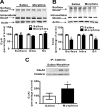
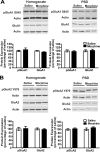
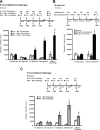
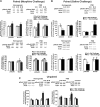
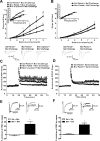
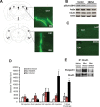
Similar articles
-
AKAP150-anchored calcineurin regulates synaptic plasticity by limiting synaptic incorporation of Ca2+-permeable AMPA receptors.J Neurosci. 2012 Oct 24;32(43):15036-52. doi: 10.1523/JNEUROSCI.3326-12.2012. J Neurosci. 2012. PMID: 23100425 Free PMC article.
-
Increased small conductance calcium-activated potassium type 2 channel-mediated negative feedback on N-methyl-D-aspartate receptors impairs synaptic plasticity following context-dependent sensitization to morphine.Biol Psychiatry. 2014 Jan 15;75(2):105-14. doi: 10.1016/j.biopsych.2013.04.026. Epub 2013 Jun 2. Biol Psychiatry. 2014. PMID: 23735878 Free PMC article.
-
Extinction of morphine-dependent conditioned behavior is associated with increased phosphorylation of the GluR1 subunit of AMPA receptors at hippocampal synapses.Eur J Neurosci. 2009 Jan;29(1):55-64. doi: 10.1111/j.1460-9568.2008.06560.x. Epub 2008 Dec 11. Eur J Neurosci. 2009. PMID: 19077125 Free PMC article.
-
Increased insertion of glutamate receptor 2-lacking alpha-amino-3-hydroxy-5-methyl-4-isoxazole propionic acid (AMPA) receptors at hippocampal synapses upon repeated morphine administration.Mol Pharmacol. 2010 May;77(5):874-83. doi: 10.1124/mol.109.060301. Epub 2010 Feb 16. Mol Pharmacol. 2010. PMID: 20159947 Free PMC article.
-
GluA1 phosphorylation contributes to postsynaptic amplification of neuropathic pain in the insular cortex.J Neurosci. 2014 Oct 1;34(40):13505-15. doi: 10.1523/JNEUROSCI.1431-14.2014. J Neurosci. 2014. PMID: 25274827 Free PMC article.
Cited by
-
Sex Differences in the Role of CNIH3 on Spatial Memory and Synaptic Plasticity.Biol Psychiatry. 2021 Dec 1;90(11):766-780. doi: 10.1016/j.biopsych.2021.07.014. Epub 2021 Jul 23. Biol Psychiatry. 2021. PMID: 34548146 Free PMC article.
-
Associations between cannabinoid receptor-1 (CNR1) variation and hippocampus and amygdala volumes in heavy cannabis users.Neuropsychopharmacology. 2012 Oct;37(11):2368-76. doi: 10.1038/npp.2012.92. Epub 2012 Jun 6. Neuropsychopharmacology. 2012. PMID: 22669173 Free PMC article.
-
A locus coeruleus to dorsal hippocampus pathway mediates cue-induced reinstatement of opioid self-administration in male and female rats.Neuropsychopharmacology. 2024 May;49(6):915-923. doi: 10.1038/s41386-024-01828-z. Epub 2024 Feb 19. Neuropsychopharmacology. 2024. PMID: 38374364 Free PMC article.
-
Glutamatergic Systems and Memory Mechanisms Underlying Opioid Addiction.Cold Spring Harb Perspect Med. 2021 Mar 1;11(3):a039602. doi: 10.1101/cshperspect.a039602. Cold Spring Harb Perspect Med. 2021. PMID: 32341068 Free PMC article. Review.
-
The μ-opioid receptor: an electrophysiologist's perspective from the sharp end.Br J Pharmacol. 2015 Jan;172(2):260-7. doi: 10.1111/bph.12633. Epub 2014 Jul 1. Br J Pharmacol. 2015. PMID: 24640948 Free PMC article. Review.
References
-
- Billa SK, Liu J, Bjorklund NL, Sinha N, Fu Y, Shinnick-Gallagher P, Morón JA. Increased insertion of glutamate receptor 2-lacking alpha-amino-3-hydroxy-5-methyl-4-isoxazole propionic acid (AMPA) receptors at hippocampal synapses upon repeated morphine administration. Mol Pharmacol. 2010;77:874–883. - PMC - PubMed
-
- Borgkvist A, Valjent E, Santini E, Hervé D, Girault JA, Fisone G. Delayed, context- and dopamine D1 receptor-dependent activation of ERK in morphine-sensitized mice. Neuropharmacology. 2008;55:230–237. - PubMed
Publication types
MeSH terms
Substances
Grants and funding
LinkOut - more resources
Full Text Sources
